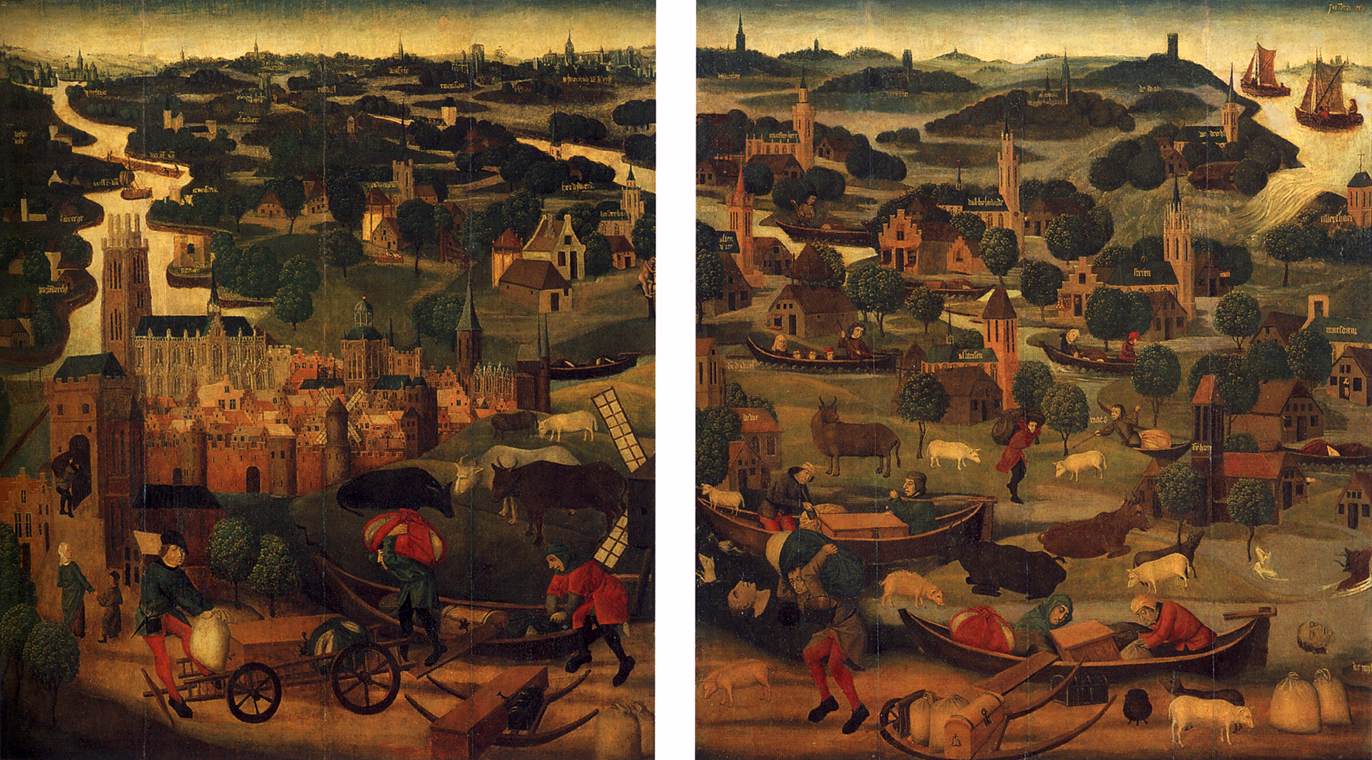The St. Elizabeth's Day Flood, c. 1490-95
During the night of 19 November 1421 a heavy storm caused rivers to surge, dikes to overflow and large areas of polder land in Zeeland and Holland to be flooded. Thousands died. Some land was eventually reclaimed, some remains flooded to this day. The Dordrecht region was particularly damaged and the survivors commissioned an altarpiece, with outer panels depicting the disaster. As you can see from the close up below, the painting includes lots of interesting details. At the bottom right a woman in Maasdam has been left behind and looks out on the devastation from her cottage. A shop is ignored by a couple in a boat as they concentrate on saving themselves. And in the top right the flood water can be seen flooding the polder near the church of Wieldrecht. Elsewhere in the paintings there is a pig trying to swim ashore, a dead body in the water, a naked man caught in a tree, a cat balanced on a baby's cradle and a refugee arriving at the gates of Dordrecht.
I saw these panels in the Stedelijk Museum recently after we'd been to the Vermeer exhibition. They have a guide to the picture that you can pick up and refer to - the image below is from this, showing the location of some of the villages. It indicates how the artist has created an interesting kind of landscape painting, expansive and extremely condensed at the same time, utilising a birds eye view, reducing distances and restricting places to just one or two buildings. Hollands Diep in the middle was an estuary which the flood extended further inland, separating the towns of Geertruidenberg and Dordrecht. The Biesboch is now a wetland national park, but before the flood it was Grote Hollandse Waard, cultivated farmland with several villages. We are quite used to seeing images of flooded landscapes now but I found it moving to think that all this took place six hundred years ago.



No comments:
Post a Comment